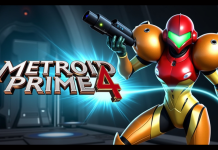Gaming is an ecosystem, a subculture, and for many, a daily ritual. From weekend warriors to daily grinders, players are no longer passive consumers; they’re active participants in a digital lifestyle where choice, customization, and expression are key. And at the heart of this evolution? Microtransactions.
What started as a way to unlock a few extra features has transformed into a full-blown behavioral shift in how we interact with virtual worlds.
Table of contents
How Small Spends Reflect Big Engagement
Microtransactions have become a powerful tool for developers — and a surprisingly revealing window into player behavior. When a gamer spends a few euros to change a character’s look, unlock a battle pass, or access a limited-time feature, it’s about more than convenience. It signals emotional investment, identity, and even status in a digital community.
This shift is particularly visible in games like Free Fire, where competitive balance and aesthetics often go hand-in-hand. Many players choose a FF top up not just for better gear, but to access events or express individuality through exclusive items. It’s no longer just about winning — it’s about standing out.
For some, these purchases also represent a deeper sense of belonging. Owning a limited-time item from a seasonal event or participating in a live, in-game concert creates a digital memory a shared cultural moment unique to gaming. These experiences become milestones, just like a favorite concert or sports event, only they happen within the digital space.
Microtransactions Power the Modern Gaming Economy
What’s often overlooked is the broader impact of these seemingly minor purchases. Microtransactions are now a major revenue stream for developers, fueling everything from graphic updates to in-game story expansions. They keep games alive long after launch day, turning static releases into evolving platforms.
For players, this system offers freedom. No need to commit to a monthly subscription or upfront cost, just pay when you want something specific. This à la carte model aligns well with how younger gamers prefer to spend: selectively and flexibly.
Supporting this economy are digital marketplaces like Eneba, which offer seamless access to game credits, in-game currency, and seasonal passes without the need for physical gear or in-store visits. These platforms help streamline the experience so players can jump right back into the action.
This convenience plays a crucial role in how players engage with games. Whether topping up while commuting, between classes, or during a tournament stream, the ability to make quick, reliable purchases is now part of the player experience. The frictionless flow between interest and action is part of what keeps players engaged.
The Rise of the Digital Lifestyle and Identity
Personalization is no longer a side bonus — it’s a core feature. Players craft identities that live entirely within virtual realms, from how their avatars look to which emotes they use. In that context, a single microtransaction can carry as much weight as a real-world fashion choice or social statement.
Gaming has evolved into a space where digital self-expression rivals real-world interaction. And as online multiplayer continues to dominate, how you present yourself inside the game can shape how you’re perceived by your peers, sometimes even more than your rank or skill level.
This transformation isn’t limited to character skins or cosmetic flair. Entire ecosystems are forming around digital status from clan affiliations and exclusive banners to event-only collectibles that serve as proof of legacy. For many, these virtual assets hold value not just in gameplay but in community standing, memory, and identity.
Games like Fortnite, Roblox, and Valorant further amplify this dynamic by turning customization into a core gameplay loop. Players don’t just want to play — they want to be seen. They want their digital persona to reflect humor, creativity, skill, and exclusivity. In these virtual spaces, microtransactions enable players to curate not just how they play, but who they are in the eyes of others.
What Comes Next for the Modern Digital Lifestyle?
Looking ahead, microtransactions will likely become more integrated into the player experience, not less. From story arcs that unfold through paid chapters to competitive seasons that hinge on premium access, the line between content and commerce continues to blur.
But it’s not just about buying perks, it’s about participating in a living, breathing world. Whether you’re chasing skins, climbing leaderboards, or just trying to stand out in the chaos, topping up your account to unlock that next moment of excitement has become part of the journey.
With innovations like blockchain, digital ownership, and cross-platform economies emerging, the microtransaction model may soon evolve into something even more personalized and persistent. Imagine skins that carry across games, player-created items that generate revenue, or gear that ages with your account history microtransactions could begin to represent more than just style or access. They could represent your entire gaming legacy.
In today’s digital lifestyle, microtransactions aren’t just optional; they’re personal. And for many players, that occasional Free Fire top up is just another way to stay connected to the game and the identity they’ve built inside it.











